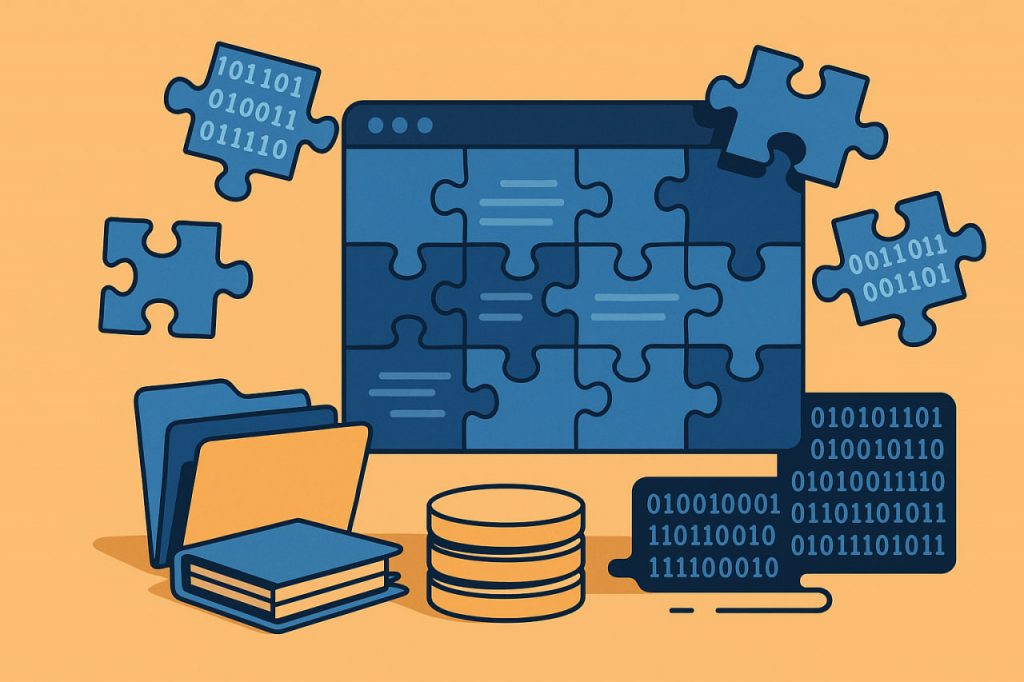Puzzle encoding is a method of transforming information into a form that resembles a disassembled puzzle, making it difficult to interpret unless properly reconstructed. While not a formal cryptographic standard, this technique is used in fields like cybersecurity, data protection, genetic research, and digital forensics. It draws inspiration from how puzzles are solved — by reordering, matching, or decoding fragments to reveal a hidden whole.
This form of encoding emphasizes structure over secrecy: the message is broken apart, shuffled, or obscured in ways that require logical assembly rather than brute-force decryption.
How Puzzle Encoding Works
Puzzle encoding can be implemented in several creative ways:
- Data Fragmentation: Breaking up a file or message into many chunks that only make sense when properly ordered.
- Shuffled Blocks: Reordering meaningful data segments (e.g., text blocks, pixels, code snippets).
- Hidden Dependencies: Making data understandable only when combined with certain “keys” or contexts — like puzzle pieces with unique connectors.
- Contextual Encoding: Embedding parts of the message in different places or formats, requiring a specific method to bring them together.
Unlike traditional encryption, puzzle encoding is often non-mathematical, relying on cognitive logic, heuristics, or pattern recognition to decode.
Where Puzzle Encoding Is Used
- Cybersecurity
- Used in digital watermarking or anti-tamper mechanisms.
- Some malware uses puzzle-based obfuscation to hide payloads from antivirus software.
- Digital Games & Puzzles
- Puzzle encoding is popular in ARGs (Alternate Reality Games) or escape rooms, where clues are hidden across formats or media.
- Data Privacy
- Systems may scatter sensitive information across multiple servers or files, requiring a “puzzle map” to retrieve them.
- Genomic and AI Data
- Puzzle encoding techniques can be used to anonymize genetic sequences or machine learning datasets while preserving usability.
Puzzle Encoding vs. Encryption
| Feature | Puzzle Encoding | Encryption |
|---|---|---|
| Requires a key? | Often no; logic-based decoding | Yes, specific mathematical key |
| Reversible? | Yes, if structure is known | Yes, with decryption algorithm |
| Security level | Medium | High (with modern ciphers) |
| Used in forensics? | Sometimes | Frequently |
Puzzle encoding is not a replacement for encryption but can serve as an additional layer of protection or obfuscation.
Advantages and Risks
Advantages:
- Creative and flexible
- Makes data harder to interpret at first glance
- Can be combined with encryption for double-layered security
Risks:
- Not foolproof if patterns are predictable
- Requires custom logic to decode
- May confuse legitimate users if instructions are lost
Because it is more about complexity than secrecy, puzzle encoding is best suited for applications where confusion or delay is more useful than absolute security.
Examples in Use
- A document split into 20 out-of-order PDFs, each renamed and stored on different drives.
- A piece of software that executes only if variables are pieced together from external files in a precise sequence.
- Genetic data where patient identifiers are separated from sequences and must be logically recombined with matching “codes.”
Glossary
- Obfuscation: The act of making something unclear or unintelligible on purpose.
- Payload: In cybersecurity, the part of malware that performs a malicious action.
- Fragmentation: Dividing a file or data into smaller pieces.
- Heuristics: Rules or methods used to solve problems quickly based on experience.
- Alternate Reality Game (ARG): A game that uses real-world elements and puzzles to tell a story.


